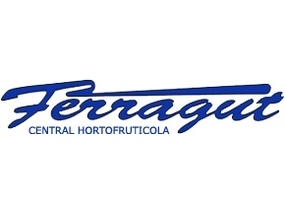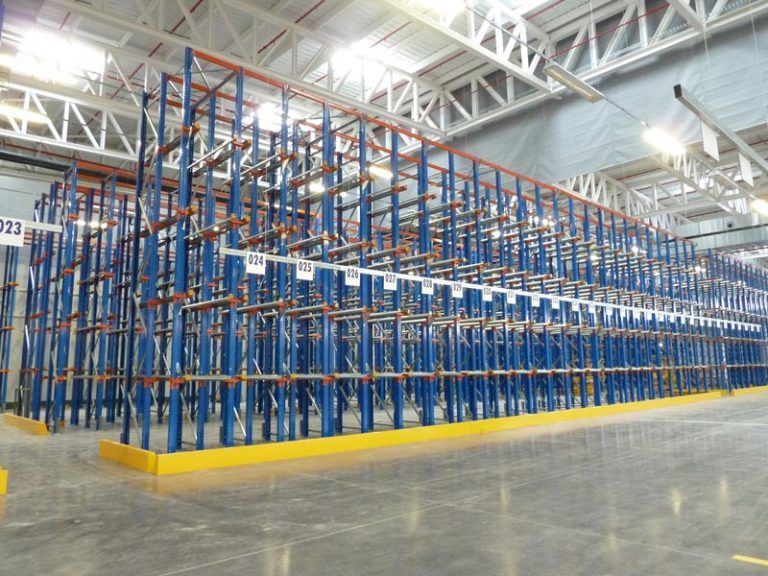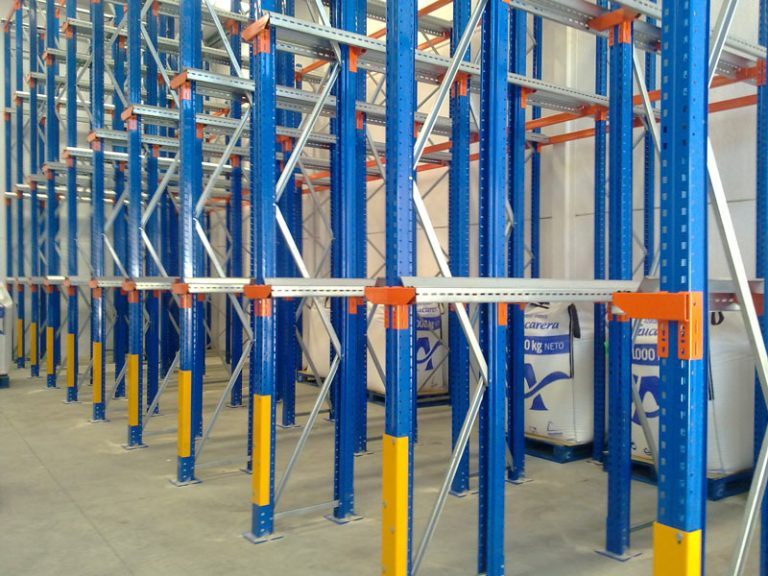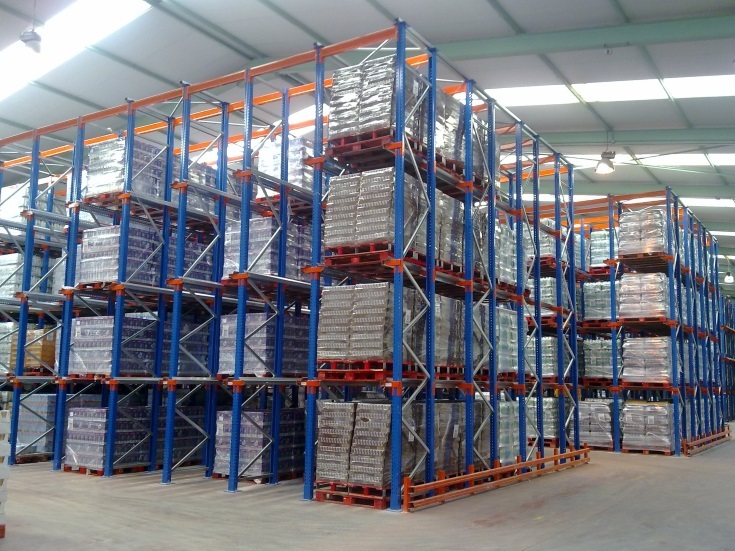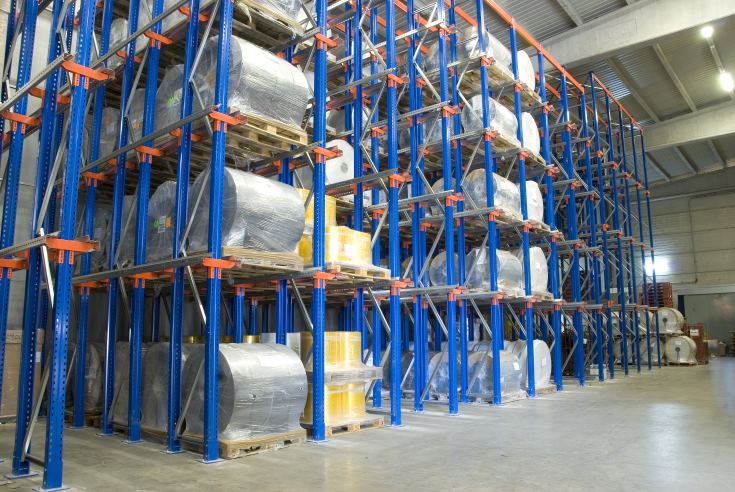Drive-in pallet racking
Home » Industrial racking » Industrial racking for palletized goods » Drive-in Pallet Racking
Drive-in pallet racking
The compact storage system also known as Drive-In, or accumulation storage system in background, facilitates the maximum use of available space utilization, both at surface and in the height.
This system is appropriate when few references are stored with a large number SKU per batch whose shipment is organized by complete rows, and is appropiate for low and medium rotation.
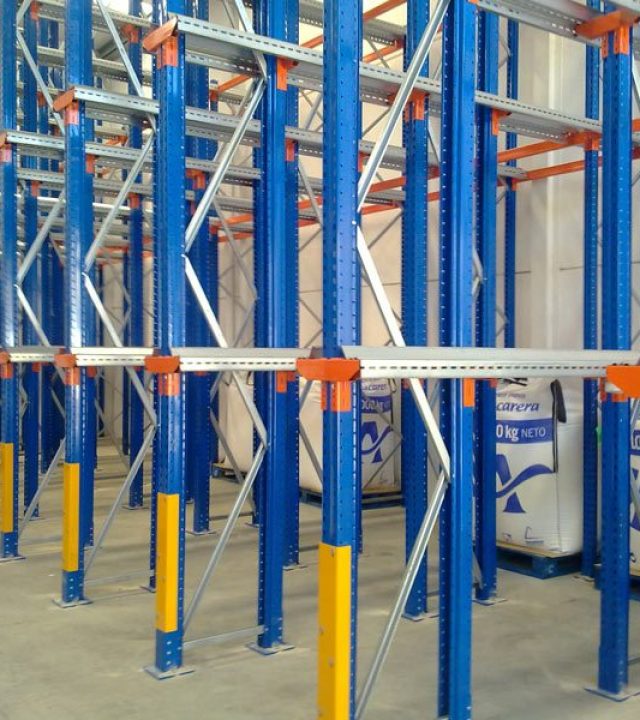
Description
Installing this storage system consists of sets of racking elements forming interior loading rows, comprising support rails for the pallets. The lift trucks drives in these rows with their load held higher than the level on which the SKU will be stored. One of the main features of the system is the high storage density that can be achieved in comparisson with a conventional racking solution.
Normally, the drive-in system supports as many differente references as there are loading rows.
The drive-in load management is the most typical way to manage the load with the compact system. The most suitable depth for storage in large quantities of the same item or product system. LIFO (last-in-first-out).
It has only one access aile, where loading and unloading is done in reverse order.
Advantages
- One SKU per channel.
- Makes use of between 60% and 80% of storage locations and up to 90% of surface in the warehouse.
- Low to medium product rotation.
- LIFO or FIFO system.
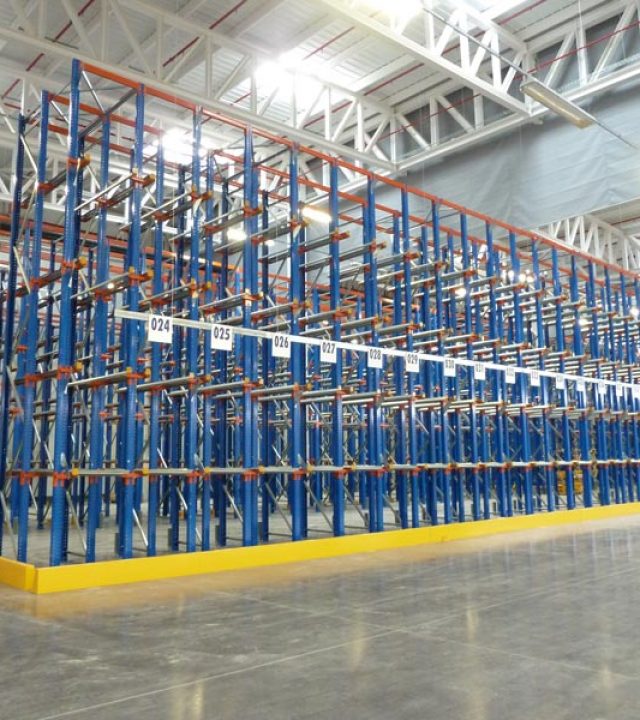
Know-How
The storage systems for accumulation in depth, drive-In or compact systems, allow maximum use of warehouse space.
Its main feature is that it lets you store batches of product with a high number of loading units of a single reference.
From an operational point of view, drive-ins are industrial racking systems operated manually by handling equipment (lift trucks), driven by workers.
The drive-in system is made up of rows arranged in parallel, with loading levels in the height equiped with pallet rails on which the loading unists are deposited. The forklift has to be driven into the storage systems for depositing or collecting the loading units.
From a safety standpoint, the handling equipment should not circulate underneath stored loading units, whereby the loading sequence must be bottom up and back to front, having to follow the reverse sequence for unloading.
Depending on customer requirements and needs, these racking systems can be designed following the LIFO principle (Last In First Out) where the loading and unloading of the racking is performed from the same aisle side (the first pallet deposited is the last pallet to be removed), or FIFO principle (First In First Out) by which the load is stored from one side and unloaded from the opposite side (the first pallet stored is the first pallet to be removed from the racking).
The design of these logistics solutions is very versatile and can be adapted to the characteristics of the unser’s loading units, regarding weights and dimensions, as well as the number of pallets in depth and height required or permitted by the warehouse and existing infrastructure.
From a constructive point of view, drive in racking structures are composed of portal constructions formed by uprights, beams and pallet rails in depth that support the loading units. Weights and efforts are collected by the pallet rails and transferred to the uprights by the supporting beams, to finally transfer all loads to the floor of the building.
Downloads
References
